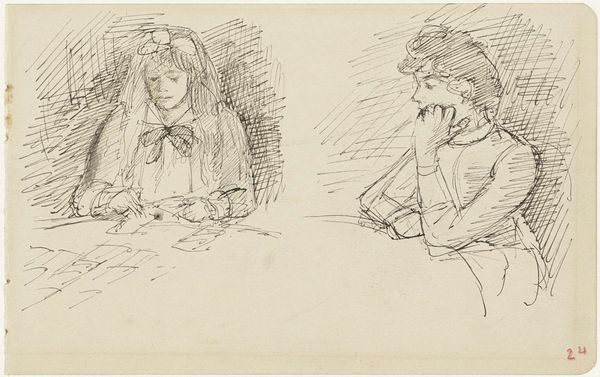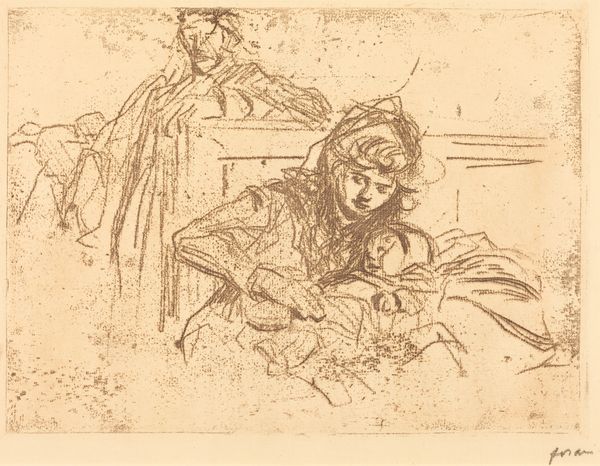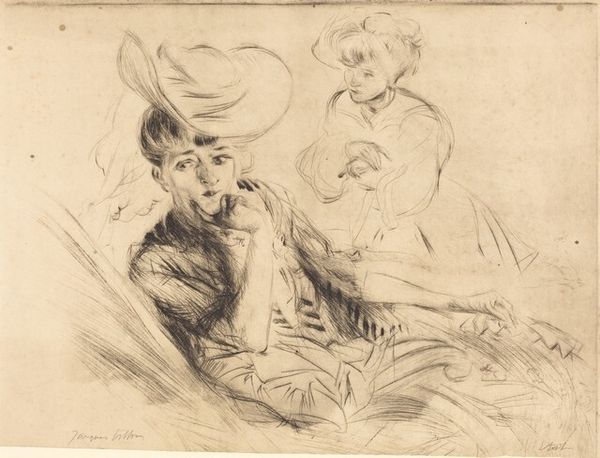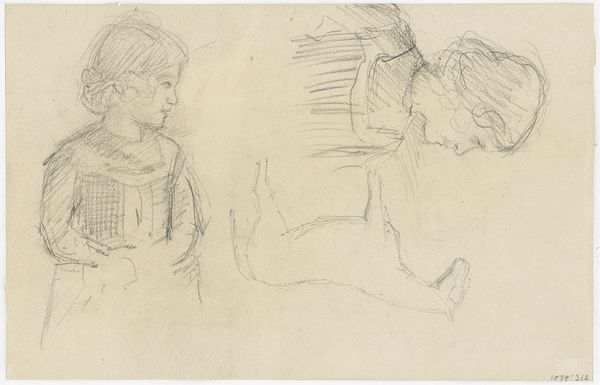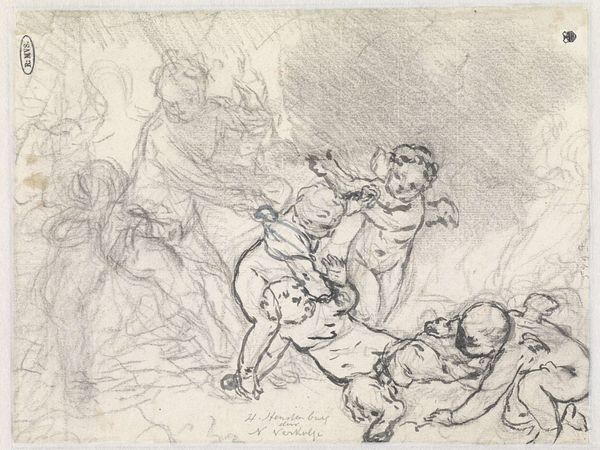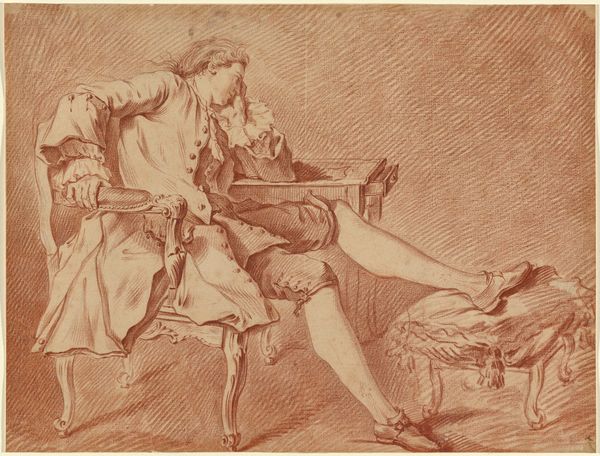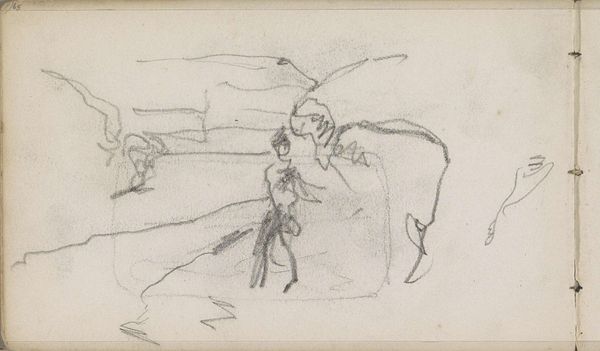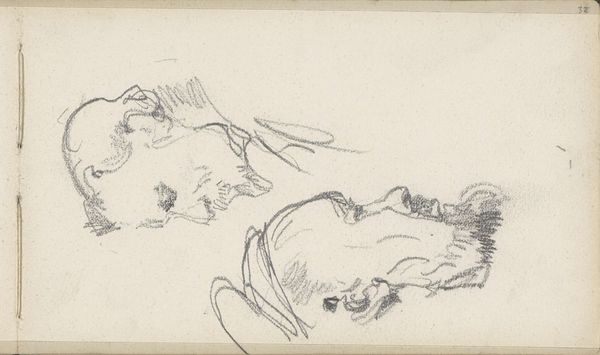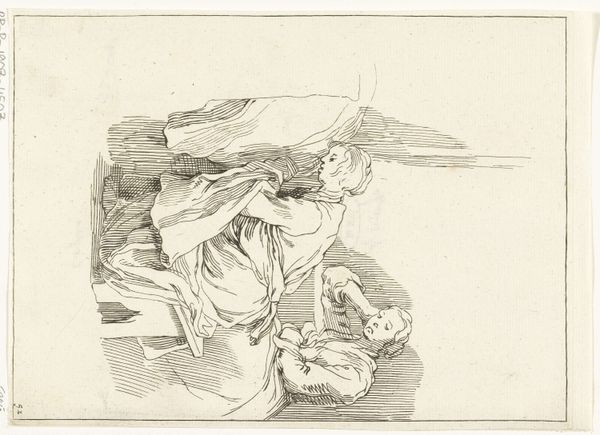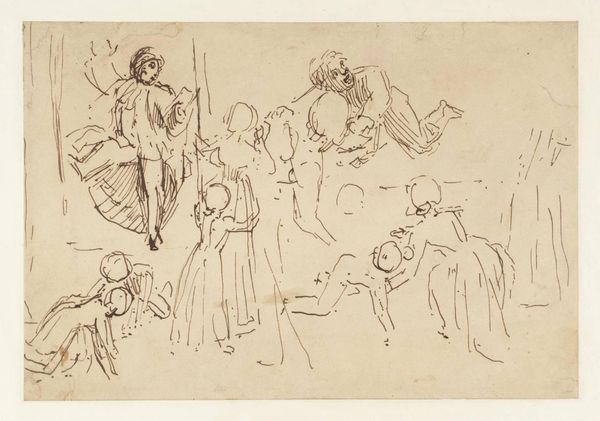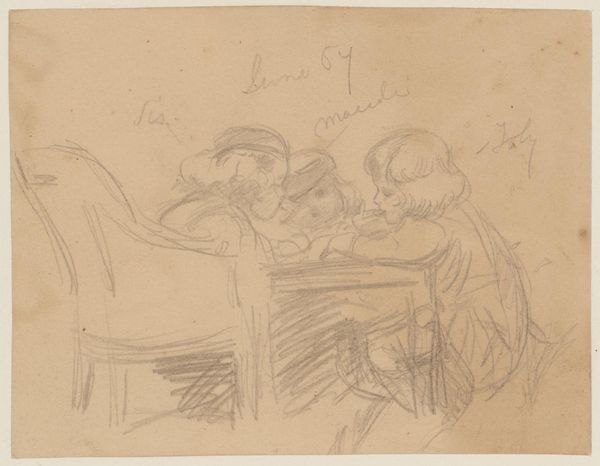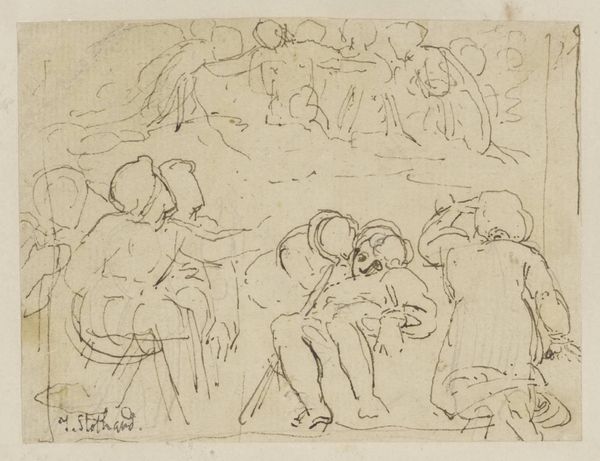
drawing, paper, ink
#
portrait
#
drawing
#
impressionism
#
pen sketch
#
pencil sketch
#
paper
#
ink
#
pen-ink sketch
#
sketchbook drawing
#
genre-painting
#
realism
Dimensions: height 131 mm, width 208 mm
Copyright: Rijks Museum: Open Domain
Curator: Looking at this evocative sketch by Jozef Israëls, created sometime between 1834 and 1911, I feel an instant connection to these women. They’re lost in their own worlds, hands busy, minds… elsewhere. What do you make of it? Editor: There's a sense of quiet industry, isn't there? Drawn with ink on paper, it looks like a quick study, yet it manages to convey so much about the activities and even social positioning of these women. Are they reading, writing, sewing? It all speaks to their labor and skills. Curator: Absolutely. The composition is fascinating. Three figures dominate, each engaged in a different activity. The pen and ink create such delicate lines, it gives them almost ethereal feel. Do you think there's a social commentary present as well? Editor: Undoubtedly. These women are portrayed through the lens of their utility—reading for self-improvement, crafting for household needs or potentially for income. Even the "feminine" aspect of needlework has a direct relationship to textiles and consumption patterns of the era. Curator: You've made me think about the tension of it all: art for art's sake against women’s labour, women having to prove worth while at the same time! The unfinished nature enhances it; it's almost as if Israëls is inviting us to fill in the gaps, to imagine their lives, the stories they're reading or writing or the garment they’re mending. Editor: Exactly. It’s this raw glimpse into their everyday realities—materials used, techniques deployed—that reveals so much. The art and labor blur; we have a material record of skill, patience, and the sheer ordinariness of life. The lack of formal polish speaks of work-in-progress that doesn’t end. Curator: Looking at it now, there is definitely a melancholy there in the quietude... and that very material reality you mention lends a new significance to it all. These might as well be depictions of some goddesses quietly fulfilling their role. Editor: Indeed. It highlights the crucial role played by everyday work practices – even supposedly leisurely pursuits. What seemed like separate practices converge into the complex ways by which labor and art have shaped, and are shaped by, material cultures of daily lives. Curator: Thanks, that completely shifts my view of this art and everyday craft! Editor: Anytime!
Comments
No comments
Be the first to comment and join the conversation on the ultimate creative platform.
